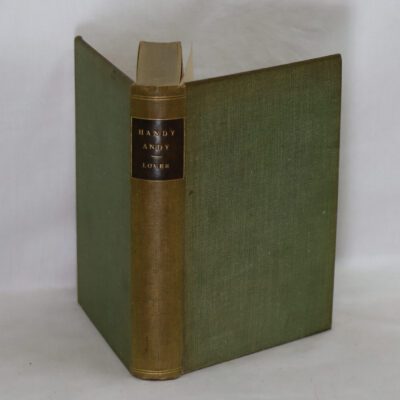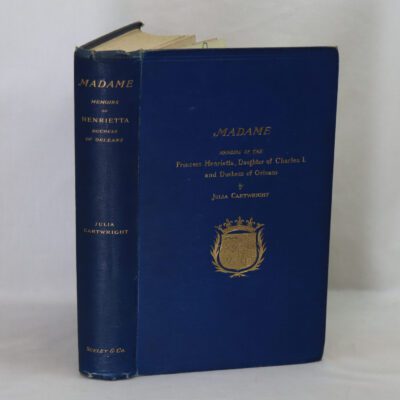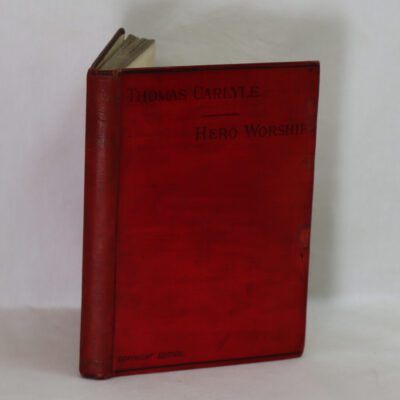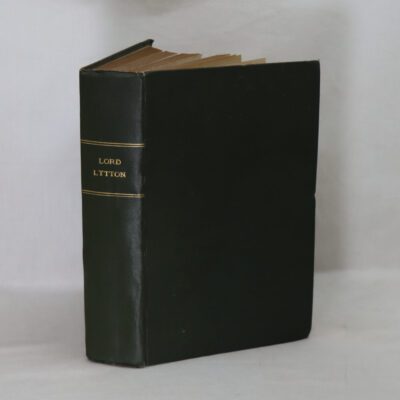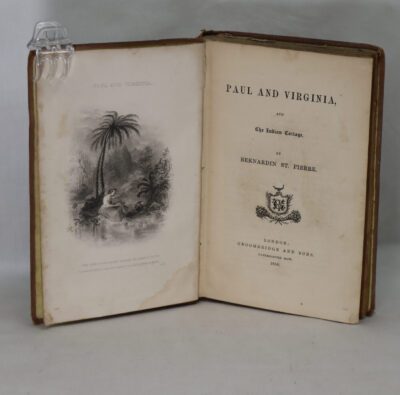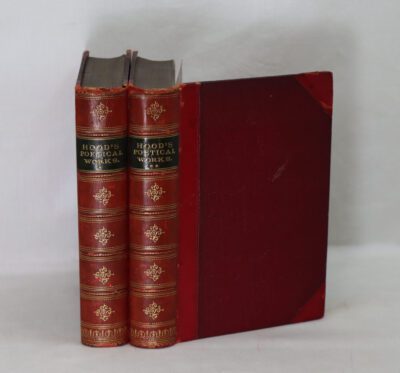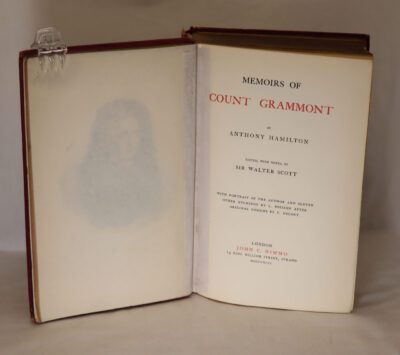The Poems of Ossian.
By James Mcpherson
Printed: 1847
Publisher: Berhard Tauchnitz. Leipzig.
| Dimensions | 13 × 17 × 2.5 cm |
|---|---|
| Language |
Language: English
Size (cminches): 13 x 17 x 2.5
Condition: Fine (See explanation of ratings)
FREE shipping
Item information
Description
Red leather spine with black title plate, gilt banding and lettering. Red cloth binding.
F.B.A. provides an in-depth photographic presentation of this item to stimulate your feel and touch. More traditional book descriptions are immediately available.
This 1765 Edition by James Macpherson for Dove’s English Classics is lovingly restored & rebound by Brian Cole. This rendition is not itself a proof of Macpherson’s composition, but Macpherson did NOT at first hold out to his publisher’s Dove, the originality of Ossian but Macpherson first asserted it was ‘his’ translated collection.
Ossian Irish Gaelic/Scottish Gaelic: Oisean is the narrator and purported author of a cycle of epic poems published by the Scottish poet James Macpherson, originally as Fingal (1761) and Temora (1763), and later combined under the title The Poems of Ossian. Macpherson claimed to have collected word-of-mouth material in Scottish Gaelic, said to be from ancient sources, and that the work was his translation of that material. Ossian is based on Oisín, son of Fionn mac Cumhaill (anglicised to Finn McCool), a legendary bard in Irish mythology. Contemporary critics were divided in their view of the work’s authenticity, but the current consensus is that Macpherson largely composed the poems himself, drawing in part on traditional Gaelic poetry he had collected.
The work was internationally popular, translated into all the literary languages of Europe and was highly influential both in the development of the Romantic movement and the Gaelic revival. Macpherson’s fame was crowned by his burial among the literary giants in Westminster Abbey. W.P. Ker, in the Cambridge History of English Literature, observes that “all Macpherson’s craft as a philological impostor would have been nothing without his literary skill.”
James Macpherson (Gaelic: Seumas MacMhuirich or Seumas Mac a’ Phearsain; 27 October 1736 – 17 February 1796) was a Scottish writer, poet, literary collector and politician, known as the “translator” of the Ossian cycle of epic poems.
In 1761, Macpherson announced the discovery of an epic on the subject of Fingal (related to the Irish mythological character Fionn mac Cumhaill/Finn McCool) written by Ossian (based on Fionn’s son Oisín), and in December he published Fingal, an Ancient Epic Poem in Six Books, together with Several Other Poems composed by Ossian, the Son of Fingal, translated from the Gaelic Language, written in the musical measured prose of which he had made use in his earlier volume. Temora followed in 1763, and a collected edition, The Works of Ossian, in 1765. The name Fingal or Fionnghall means “white stranger”, and it is suggested that the name was rendered as Fingal through a derivation of the name which in old Gaelic would appear as Finn.
The authenticity of these so-called translations from the works of a 3rd-century bard was immediately challenged by Irish historians, especially Charles O’Conor, who noted technical errors in chronology and in the forming of Gaelic names and commented on the implausibility of many of Macpherson’s claims, none of which Macpherson was able to substantiate. More forceful denunciations were later made by Samuel Johnson, who asserted (in A Journey to the Western Islands of Scotland, 1775) that Macpherson had found fragments of poems and stories, and then woven them into a romance of his own composition. Further challenges and defences were made well into the nineteenth century, but the issue was moot by then. Macpherson’s manuscript Gaelic “originals” were published posthumously in 1807; Ludwig Christian Stern was sure they were in fact back-translations from his English version.
After Macpherson’s death, Malcolm Laing, in an appendix to his History of Scotland (1800), concluded that the so-called Ossianic poems were altogether modern in origin, and that Macpherson’s authorities were practically non-existent.
Despite the above, some critics claim that Macpherson nonetheless produced a work of art which by its deep appreciation of natural beauty and the melancholy tenderness of its treatment of the ancient legend did more than any single work to bring about the romantic movement in European, and especially in German, literature. It was quickly translated into many European languages, and Herder and Goethe (in his earlier period) were among its profound admirers. Goethe incorporated his translation of a part of the work into his novel The Sorrows of Young Werther. Melchiore Cesarotti’s Italian translation was reputedly a favourite of Napoleon.
Macpherson’s legacy indirectly includes the naming of Fingal’s Cave on the island of Staffa. The original Gaelic name is “An Uamh Bhin” (“the melodious cave”), but it was renamed by Sir Joseph Banks in 1772 at the height of Macpherson’s popularity.
NOTE: Macpherson is often compared to Edward Williams, better known by his bardic name Iolo Morganwg; 10 March 1747 – 18 December 1826). Williams was a Welsh antiquarian, poet, and collector of ill repute. He was seen as an expert collector of Medieval Welsh literature, but it emerged after his death that he had forged several manuscripts, notably some of the Third Series of Welsh Triads. Even so, he had a lasting impact on Welsh culture, notably in founding the secret society known as the Gorsedd, through which Iolo Morganwg successfully co-opted the 18th-century Eisteddfod revival. The philosophy he spread in his forgeries has had an enormous impact upon neo-Druidism. His bardic name is Welsh for “Iolo of Glamorgan”.
Want to know more about this item?

Related products
Share this Page with a friend



